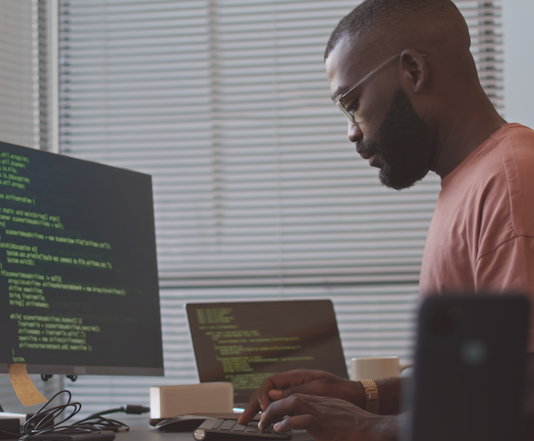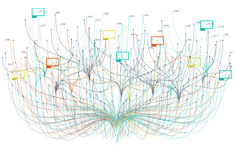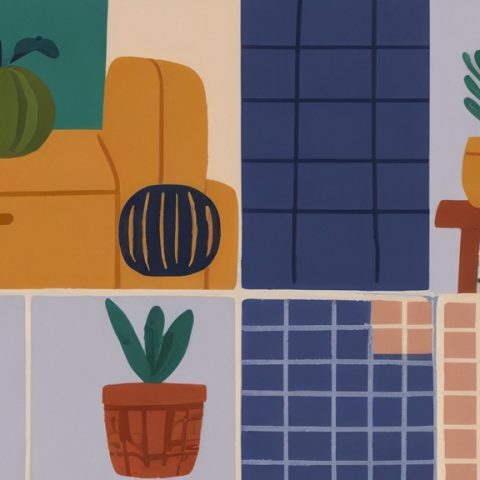What are bounding boxes?
Bounding boxes are crucial in computer vision and object detection tasks, as they provide a visual reference for localizing and identifying objects in images or video frames. These rectangular frames encapsulate the objects of interest, offering essential information about their size, position, and shape. By defining the boundaries of objects, bounding boxes enable algorithms to process and analyze visual data efficiently.
One of the primary applications of bounding boxes is in autonomous driving systems, which detect and track vehicles, pedestrians, and other objects on the road. Bounding boxes allow self-driving cars to understand their surroundings and make informed decisions based on the detected objects’ positions and movements.
Surveillance systems rely heavily on bounding boxes to identify and track individuals or suspicious activities in real time. By enclosing the objects of interest, these systems can accurately monitor specific areas and raise alerts when necessary. Additionally, bounding boxes are crucial in image recognition tasks, where they help identify and classify objects in a given image.
Another exciting application of bounding boxes is in augmented reality (AR), where they overlay virtual objects onto the real world. By precisely localizing objects, bounding boxes enable AR systems to seamlessly integrate virtual elements, enhancing user experiences in various domains, such as gaming, interior design, and retail.
Overall, bounding boxes are versatile and widely used in numerous computer vision applications, playing a vital role in object detection, tracking, recognition, and augmented reality.
Types of bounding boxes
Bounding boxes come in different types, depending on the shape and complexity required for a particular task. The two most common types are the axis-aligned bounding boxes (AABB) and the oriented bounding boxes (OBB).
Axis-aligned bounding boxes (AABBs) are the simplest and most frequently used type. As the name suggests, they align with the image’s axes, resulting in a rectangular frame surrounding the object. AABBs are easy to compute and compare, making them suitable for many computer vision applications. However, they may not precisely capture the object’s shape if it is rotated or inclined.
On the other hand, oriented bounding boxes provide a more accurate representation of an object’s shape by allowing rotation. OBBs are not restricted to aligning with the image’s axes and can be oriented based on the object’s orientation. While OBBs offer better accuracy, they are more computationally expensive to generate and handle than AABBs.
Apart from these two basic types, specialized bounding boxes are designed for specific scenarios. For example, hierarchical bounding boxes are used in multi-scale object detection, where objects of different sizes must be detected simultaneously. These bounding boxes form a hierarchy, enabling efficient and accurate detection across various scales.
Choosing the appropriate type of bounding box depends on the specific requirements of the task at hand, considering factors such as computational efficiency, accuracy, and the object’s shape and orientation.
How bounding boxes work in computer vision
In computer vision, bounding box annotations are crucial for localizing and identifying objects in images or video frames. Generating bounding boxes involves several steps, starting with object detection and then localization and classification.
Object detection algorithms analyze the input image or video frame and identify regions of interest that potentially contain objects. These regions, often called proposals, are evaluated to determine whether they contain objects.
Once the objects are detected, bounding boxes are created to encompass each object. These boxes are defined by their coordinates, typically represented as the top-left corner’s (x, y) coordinates and the box’s width and height. By enclosing the objects, bounding boxes provide a precise localization of the objects, enabling further analysis and processing.
In addition to localization, bounding boxes also facilitate object classification. After detecting and localizing objects, algorithms analyze the content within the bounding boxes to classify the objects into predefined categories. This classification can be done using various techniques, such as machine learning models or deep neural networks, which have been trained on labelled datasets.
The effectiveness of bounding boxes in computer vision tasks depends on their accuracy and ability to enclose the objects of interest precisely. However, generating accurate bounding boxes can be challenging due to various factors, including occlusion, scale variations, and complex backgrounds.
Challenges in creating accurate bounding boxes
Creating accurate bounding boxes ensures reliable object detection and localization in computer vision tasks. However, several challenges can hinder the accuracy of bounding boxes, requiring careful consideration during their generation.
One significant challenge is occlusion, where other objects or the environment partially or entirely obscures objects of interest. Occlusion can make it difficult for algorithms to accurately localize and delineate the boundaries of the objects, resulting in imprecise bounding boxes.
Another challenge arises from scale variations, where objects appear at different sizes in the images or video frames. Bounding boxes must account for these scale variations to capture the object’s boundaries accurately. Failing to do so can lead to inaccurate localization or even missed detections.
Complex backgrounds can also pose challenges in creating accurate bounding boxes. Objects that blend with the background or have similar colours and textures can be challenging to distinguish and enclose precisely. Algorithms must be robust enough to differentiate the objects from the background and generate accurate bounding boxes.
Moreover, objects with irregular shapes or non-rigid structures can present additional challenges. Bounding boxes designed for axis-aligned objects may not accurately capture the object’s shape or orientation, resulting in imprecise localization. Specialized bounding box types, such as oriented bounding boxes, can be used to address this challenge.
Various techniques and strategies can be employed to overcome these challenges and improve the accuracy of bounding boxes in computer vision tasks. These techniques range from data augmentation and preprocessing to advanced deep-learning models and algorithms.
Techniques for improving bounding box accuracy
Improving the accuracy of bounding boxes is essential to ensure reliable object detection and localization in computer vision tasks. Several techniques can be employed to enhance the accuracy of bounding boxes, addressing challenges such as occlusion, scale variations, and complex backgrounds.
One commonly used technique is data augmentation, where the training dataset is augmented with artificially generated variations of the original data. By introducing variations in scale, rotation, lighting, or other factors, algorithms can learn to handle different scenarios and improve the accuracy of bounding boxes.
Preprocessing techniques, such as image normalization or background subtraction, can also enhance the accuracy of bounding boxes. These techniques help remove noise, correct lighting conditions, and improve the contrast between objects and the background, making it easier for algorithms to detect and localize objects accurately.
Advanced deep learning models, such as convolutional neural networks (CNNs), have revolutionized object detection and localization tasks. These models can learn intricate features and patterns from vast training data, enabling them to generate highly accurate bounding boxes. Techniques like region-based CNNs (R-CNNs) and You Only Look Once (YOLO) have been widely adopted for their efficiency and accuracy in bounding box generation.
Another technique for improving bounding box accuracy is the use of ensemble methods. Ensemble methods combine multiple models or algorithms to make predictions, increasing the overall accuracy and robustness. By aggregating the outputs of various models, ensemble methods can generate more accurate bounding boxes that are less affected by individual model biases or errors.
Overall, improving the accuracy of bounding boxes requires a combination of techniques, ranging from data augmentation and preprocessing to advanced deep-learning models and ensemble methods. These techniques play a crucial role in enhancing the reliability and performance of computer vision algorithms.
Applications of bounding boxes
Bounding boxes are used in various domains because they can localize and identify objects accurately. Some critical applications include autonomous driving, surveillance systems, image recognition, and augmented reality.
In autonomous driving systems, bounding boxes detect and track vehicles, pedestrians, traffic signs, and other objects on the road. By accurately localizing these objects, bounding boxes provide essential information for self-driving cars to make informed decisions and navigate safely.
Surveillance systems rely on bounding boxes to identify and track individuals, vehicles, or suspicious activities. By enclosing the objects of interest, bounding boxes enable real-time monitoring and alerting, enhancing security and safety in various environments, such as airports, shopping malls, or public spaces.
Bounding boxes also benefit image recognition tasks, which aim to identify and classify objects within an image. By localizing the objects, bounding boxes provide crucial context for accurate recognition and classification. This application is used in various fields, including medical imaging, e-commerce, and visual search engines.
Another exciting application of bounding boxes is in augmented reality (AR), where they overlay virtual objects onto the real world. By precisely localizing objects, bounding boxes facilitate the seamless integration of virtual elements, allowing users to interact with virtual objects in real time. This technology has applications in gaming, interior design, retail, and many other domains.
With the rapid advancements in computer vision and the increasing availability of high-quality cameras and sensors, the applications of bounding boxes continue to expand, transforming industries and enhancing user experiences.
Bounding box annotation tools
Generating accurate bounding boxes often involves manually annotating objects in images or video frames. This annotation process can be time-consuming and tedious, requiring specialized tools to ensure efficiency and accuracy.
Several bounding box annotation tools are available. These tools are designed to streamline the annotation process and provide advanced features for precise object localization. Some popular tools include Labelbox, Kili Technologies, Encord, RectLabel, VoTT, and CVAT.
Labelbox is a powerful annotation platform that supports various annotation types, including bounding boxes. It offers collaboration, data management, and model-assisted labelling, making it suitable for individual annotators and large teams.
RectLabel is a Mac-based annotation tool designed explicitly for bounding box annotation. It provides a user-friendly interface and supports features like automatic object detection, keyboard shortcuts, and exporting annotations in various formats.
VoTT (Visual Object Tagging Tool) is an open-source annotation tool developed by Microsoft. It offers an intuitive interface for annotating bounding boxes and supports collaboration, project management, and integration with popular machine learning frameworks.
CVAT (Computer Vision Annotation Tool) is another open-source platform that supports various annotation types, including bounding boxes. It offers a web-based interface, enabling easy access and collaboration among annotators. CVAT also provides extensive customization options and supports model training and inference.
These annotation tools, among many others, provide efficient workflows and advanced features to speed up the bounding box annotation process, ensuring accurate and reliable object detection and localization in computer vision tasks.
Bounding box algorithms and deep learning models
Generating accurate bounding boxes in computer vision involves sophisticated algorithms and deep-learning models. These algorithms and models are designed to analyze images or video frames, detect objects, and generate precise bounding boxes.
The sliding window algorithm is a widely used algorithm for bounding box generation. This algorithm involves sliding a fixed-size window across an image at different scales and positions and classifying each window as containing an object. The resulting windows containing objects are refined to generate accurate bounding boxes.
Region-based convolutional neural networks (R-CNNs) have revolutionized object detection and bounding box generation. R-CNNs divide the image into regions of interest and use CNNs to extract features from these regions. The extracted features are then used to classify the objects and generate accurate bounding boxes. Variations of R-CNNs, such as Fast R-CNN and Faster R-CNN, have further improved the efficiency and accuracy of bounding box generation.
You Only Look Once (YOLO) is another popular deep learning model for object detection and bounding box generation. YOLO divides the image into a grid and directly predicts bounding boxes and class probabilities from the grid cells. This approach allows for real-time object detection and accurate bounding box generation.
Other deep learning models, such as Single Shot MultiBox Detector (SSD) and RetinaNet, have also gained popularity for their efficiency and accuracy in bounding box generation. These models use various techniques, such as anchor boxes and feature pyramids, to generate precise bounding boxes across different scales.
Like all tech hardware and software, the bounding box algorithms and deep learning models are evolving rapidly, with constant advancements and research. These algorithms and models continue to push the boundaries of object detection and localization, enabling more accurate and reliable bounding box generation.
Bounding boxes are a fundamental concept in computer vision and object detection. They provide a visual reference for localizing and identifying objects in images or video frames. They play a vital role in various applications, including autonomous driving, surveillance systems, image recognition, and augmented reality.
Understanding the different types of bounding boxes, the challenges in creating accurate bounding boxes, and the techniques for improving their accuracy is essential for anyone working with computer vision algorithms or developing AI models for object detection.
Bounding box applications continue to expand, driven by advancements in computer vision, high-quality cameras, and sensors. Annotation tools, sophisticated algorithms, and deep learning models contribute to accurate and reliable bounding box generation in computer vision tasks.
As progresses, bounding boxes will remain crucial, enabling machines to perceive and understand the visual world. With ongoing research and advancements, the accuracy and efficiency of bounding box generation will continue to improve, opening up new possibilities and applications in various domains.










